Counsellor of State

Counsellors of State are senior members of the British royal family to whom the monarch can delegate royal functions through letters patent under the Great Seal, to prevent delay or difficulty in the dispatch of public business in the case of their illness (except total incapacity) or of their intended or actual absence from the United Kingdom.[1][2]
Counsellors of state may carry out "such of the royal functions as may be specified in the Letters Patent".[1] In practice, this means most of the monarch's official duties, such as attending Privy Council meetings, signing routine documents and receiving the credentials of new ambassadors to the Court of St James's.[3] However, by law, counsellors of state cannot grant ranks, titles or peerages.[1] They also, by the terms of the letters patent, cannot deal with a number of core constitutional functions, such as Commonwealth matters, the dissolution of Parliament (except on the monarch's express instruction) and the appointment of prime ministers.[3] A rare example occurred on 7 February 1974 of the Proclamation of the Dissolution of Parliament being promulgated by Queen Elizabeth The Queen Mother and Princess Margaret as counsellors of state, on the express instructions of Queen Elizabeth II.[4]
Royal functions are to be exercised jointly by the counsellors of state or by such number of them as is specified in the letters patent under the Great Seal and subject to any other conditions within.[5] However, there is a legal presumption that counsellors of state should act jointly and, as such, at least two are needed to act, with the absence of one possibly risking a legal challenge.[6]
Counsellors of state are always the monarch's spouse and the next four people in the line of succession who meet the following specifications: they must be British subjects of full age (21 years, or 18 years for the heir apparent or presumptive) who are domiciled in the United Kingdom and not disqualified from becoming monarch.[7][8] During a regency, the next four eligible people in the line of succession after the regent (and the regent's spouse) may be counsellors.[9] A monarch may also request that Parliament add specific people to their counsellors of state. This was done by Queen Elizabeth II leading to section 3 of the Regency Act 1953 and by King Charles III leading to the Counsellors of State Act 2022.[10]
History
[edit]The first counsellors of state were appointed by George V under the royal prerogative in 1911 when he traveled to India for the Delhi Durbar, and they continued to be appointed under the prerogative for the rest of his reign. At first, senior politicians such as the Prime Minister and the Lord Chancellor could serve as counsellors of state, but later counsellors of state were drawn exclusively from the ranks of the Royal Family. The Regency Act 1937 (1 Edw. 8 & 1 Geo. 6. c. 16) ultimately placed the appointment of counsellors of state on a statutory footing and codified the practice of only entrusting the role to senior members of the Royal Family.
Since the passage of the Regency Act 1937, the only persons to have been counsellors of state while not a queen consort, prince, or princess were George Lascelles, 7th Earl of Harewood; Alastair Windsor, 2nd Duke of Connaught and Strathearn (although Windsor had been a prince between 1914 and 1917 and never served in practice during his short tenure); and Maud Carnegie, Countess of Southesk (who was entitled to the style of princess but did not use it).[citation needed] Prior to that, the Lord Chancellor, the Lord President of the Council, the prime minister, and the Archbishop of Canterbury had been appointed to the position by George V.[citation needed]
Queen Elizabeth The Queen Mother lost her eligibility to be a counsellor of state in 1952 upon the death of her husband, King George VI. Section 3 of the Regency Act 1953, however, restored her position. The provision was specific to her, rather than applying to dowager consorts generally, and became spent upon her death in 2002.
In September 2022, The Daily Telegraph reported that King Charles III wanted the law to be amended to allow only working members of the royal family to serve as counsellors of state. This would take away the eligibility of family members that do not carry out official functions, while creating a possibility for spouses to senior ranking members and those with a lower position in the line of succession to be called upon and fulfil the role.[11]
Questions were raised in the House of Lords in October 2022 by Lord Stansgate about the "suitability" of having the Duke of York and Duke of Sussex as counsellors of state when the former had "left public life" and the latter had "left the country". It was subsequently reported that, instead of removing them from the list of counsellors of state, it was being proposed that the pool of counsellors be expanded in order to create a more flexible list of available royals to stand in for the King if needed.[12] On 14 November 2022, the King sent a message to both Houses of Parliament, formally asking for a change in the law that would allow Princess Anne and Prince Edward to be added to the list of counsellors of state.[13] The next day, a bill to that end was introduced in Parliament and it received royal assent on 6 December, coming into force on 7 December as the Counsellors of State Act 2022.[14]
List of current counsellors of state
[edit]As of 7 December 2022, those eligible to be appointed counsellors of state to King Charles III are:[10]
| Counsellor | Since | Relation to Monarch | Succession order | Change |
|---|---|---|---|---|
 Queen Camilla |
8 September 2022 | Spouse | N/A | Accession to the throne of Charles III |
 William, Prince of Wales |
21 June 2003 | Son and heir apparent | First | Reached the age of 21 |
 Prince Harry, Duke of Sussex |
15 September 2005 | Son | Fifth | |
 Prince Andrew, Duke of York |
19 February 1981 | Brother | Eighth | |
 Princess Beatrice |
8 September 2022 | Niece | Ninth | Accession to the throne of Charles III |
 Prince Edward, Duke of Edinburgh |
7 December 2022 | Brother | Fourteenth | Counsellors of State Act 2022 |
 Anne, Princess Royal |
Sister | Seventeenth |
Of these seven, Prince Andrew, Prince Harry, and Princess Beatrice do not perform royal duties. If Prince Harry ceases to be domiciled in the United Kingdom, he shall become ineligible to be a counsellor of state.[6]
Prince Andrew remains eligible to serve in this role, though he has withdrawn from most royal activities; this provoked by a backlash due to the allegations of sexual abuse made against him.[15][16]
Should any of the above, other than the Queen, the Duke of Edinburgh or the Princess Royal, become ineligible or unable to serve, the next person eligible would be Princess Eugenie. Prince George is to automatically become a counsellor of state on his 21st birthday on 22 July 2034 (or his 18th birthday should he be the heir apparent at that time), and would replace Princess Beatrice.
List of former counsellors of state
[edit]The following is a list of all the people who have been eligible to be a counsellor of state, listed in chronological order. A † indicates Counsellors who died whilst eligible:
George VI (11 December 1936 – 6 February 1952)[edit] | ||||
| Counsellor | Period | Relation to Monarch | Change | |
|---|---|---|---|---|
 Queen Elizabeth |
19 March 1937 – 6 February 1952 |
Spouse | Passage of the Regency Act 1937 | |
 Prince Henry, Duke of Gloucester |
19 March 1937 – 10 June 1974† |
Brother | ||
 Prince George, Duke of Kent |
19 March 1937 – 25 August 1942† |
Brother | ||
 Mary, Princess Royal |
19 March 1937 – 25 December 1957 |
Sister | ||
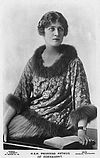 Princess Arthur of Connaught, Duchess of Fife |
19 March 1937 – 21 April 1944 |
Cousin | ||
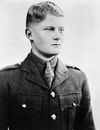 Alastair Windsor, Duke of Connaught and Strathearn Never served |
25 August 1942 – 26 April 1943† |
First cousin once removed |
Replaced Prince George, Duke of Kent upon his death | |
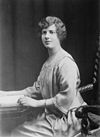 Maud Carnegie, Countess of Southesk |
26 April 1943 – 7 February 1944 |
Cousin | Replaced Alastair Windsor, Duke of Connaught and Strathearn upon his death | |
George Lascelles, Viscount Lascelles (Earl of Harewood from 1947) |
7 February 1944 – 21 August 1951 |
Nephew | Replaced Maud Carnegie, Countess of Southesk upon reaching the age of 21 | |
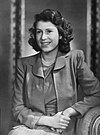 Princess Elizabeth (Duchess of Edinburgh from 1947) |
21 April 1944 – 6 February 1952 |
Daughter (Heir-presumptive) | Replaced Princess Arthur of Connaught, Duchess of Fife upon reaching the age of 18 | |
 Princess Margaret |
21 August 1951 – 10 March 1985 |
Daughter | Replaced George Lascelles, Earl of Harewood upon reaching the age of 21 | |
Elizabeth II (6 February 1952 – 8 September 2022)[edit] | ||||
| Counsellor | Period | Relation to Monarch | Change | |
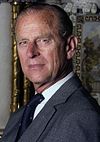 Prince Philip, Duke of Edinburgh |
6 February 1952 – 9 April 2021† |
Spouse | Accession to the throne of Elizabeth II | |
 Princess Margaret (Countess of Snowdon from 1961) |
21 August 1951 – 10 March 1985 |
Sister | Already eligible | |
 Prince Henry, Duke of Gloucester |
19 March 1937 – 10 June 1974† |
Uncle | ||
 Mary, Princess Royal |
19 March 1937 – 25 December 1957 |
Aunt | ||
George Lascelles, Earl of Harewood |
6 February 1952 – 9 October 1956 |
Cousin | Accession to the throne of Elizabeth II | |
 Queen Elizabeth The Queen Mother |
19 November 1953[17] – 30 March 2002† |
Mother | Passage of the Regency Act 1953 | |
 Prince Edward, Duke of Kent |
9 October 1956 – 26 August 1965 |
Cousin | Replaced George Lascelles, Earl of Harewood upon reaching the age of 21 | |
 Princess Alexandra of Kent |
25 December 1957 – 18 December 1962 |
Cousin | Replaced Mary, Princess Royal upon reaching the age of 21 | |
 Prince William of Gloucester |
18 December 1962 – 15 August 1971 |
Cousin | Replaced Princess Alexandra of Kent upon reaching the age of 21 | |
 Prince Richard of Gloucester |
26 August 1965 – 14 November 1966 |
Cousin | Replaced Prince Edward, Duke of Kent upon reaching the age of 21 | |
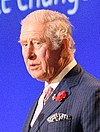 Charles, Prince of Wales |
14 November 1966 – 8 September 2022 |
Son and Heir-apparent |
Replaced Prince Richard of Gloucester upon reaching the age of 18 | |
 Princess Anne (Princess Royal from 1987) |
15 August 1971 – 21 June 2003[18] |
Daughter | Replaced Prince William of Gloucester upon reaching the age of 21 | |
 Prince Richard, Duke of Gloucester |
10 June 1974 – 19 February 1981 |
Cousin | Replaced Prince Henry, Duke of Gloucester upon his death | |
 Prince Andrew (Duke of York from 1986) |
19 February 1981 – 8 September 2022[19] |
Son | Replaced Prince Richard, Duke of Gloucester upon reaching the age of 21 | |
 Prince Edward (Earl of Wessex from 1999) |
10 March 1985 – 15 September 2005[20] |
Son | Replaced Princess Margaret, Countess of Snowdon upon reaching the age of 21 | |
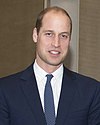 Prince William (Duke of Cambridge from 2011) |
21 June 2003 – 8 September 2022[19] |
Grandson | Replaced Anne, Princess Royal upon reaching the age of 21 | |
 Prince Harry (Duke of Sussex from 2018) |
15 September 2005 – 8 September 2022[19] |
Grandson | Replaced Prince Edward, Earl of Wessex upon reaching the age of 21 | |
Timeline
[edit]
References
[edit]- ^ a b c Regency Act 1937, s 6(1).
- ^ "Counsellors of State". Retrieved 18 January 2024.
- ^ a b "Counsellors of State". royal.uk. 7 January 2016. Archived from the original on 22 April 2017. Retrieved 30 August 2021.
- ^ London Gazette no. 46205, 8 February 1974, pp. 1851–1852
- ^ Regency Act 1937, s 6.
- ^ a b Prescott, Craig (21 January 2020). "Harry and Meghan, Regency, Counsellors of State and a "Slimmed Down" Royal Family". UK Constitutional Law Association. Archived from the original on 6 February 2020. Retrieved 30 August 2021.
- ^ Regency Act 1937, s 6(2) and 3(2).
- ^ Velde, François (29 April 2007). "Regency Acts 1937 to 1953". Heraldica. Archived from the original on 27 April 2001. Retrieved 30 August 2021.
- ^ Section 6(4).
- ^ a b "'Concerns me that something went wrong': Princess Kate's long-term recovery from surgery". Sky News Australia. YouTube. 18 January 2024.
- ^ Ward, Victoria; Malnick, Edward (17 September 2022). "King Charles seeks to amend law on who can act as his official stand-in". The Telegraph. Retrieved 17 September 2022.
- ^ Coughlan, Sean (26 October 2022). "More stand-ins for King, but Prince Andrew and Prince Harry stay". BBC News. Retrieved 26 October 2022.
- ^ "Princess Anne and Prince Edward to become stand-ins for King". BBC News. 14 November 2022. Retrieved 15 November 2022.
- ^ "Counsellors of State Act 2022". The National Archive. Retrieved 7 December 2022.
- ^ "Prince Andrew to remain counsellor of state after settling sexual abuse lawsuit". The Guardian. 16 February 2022.
- ^ Meighan, Craig (14 September 2022). "Anger over Prince Andrew's Earl of Inverness title amid Counsellor of State backlash". The National. Newsquest. Archived from the original on 14 September 2022. Retrieved 14 September 2022.
- ^ Queen Elizabeth lost her position as counsellor of state when she was widowed. However, the Regency Act 1953 re-appointed her as a counsellor of state.
- ^ The Princess Royal lost her position as counsellor of state when Prince William reached the age of 21. However, the Counsellors of State Act 2022 re-appointed her as a counsellor of state to Charles III.
- ^ a b c Continued as a Counsellor of State to Charles III upon his accession
- ^ Prince Edward lost his position as counsellor of state when Prince Harry reached the age of 21. However, the Counsellors of State Act 2022 re-appointed him as a counsellor of state to Charles III.
Bibliography
[edit]- Velde, François R. (2004). Regency Acts 1937 to 1953. Retrieved 2005.
External links
[edit]- Counsellors of State – The Royal Family's website
- Text of the Regency Act 1937 as in force today (including any amendments) within the United Kingdom, from legislation.gov.uk.
